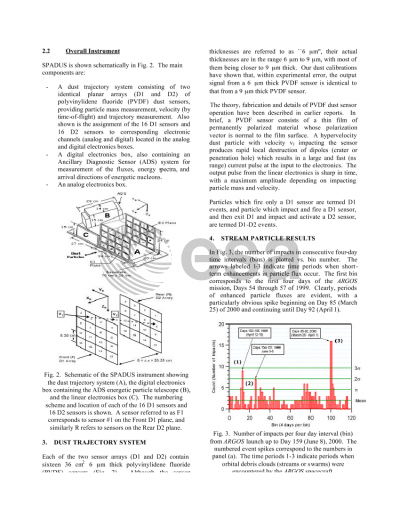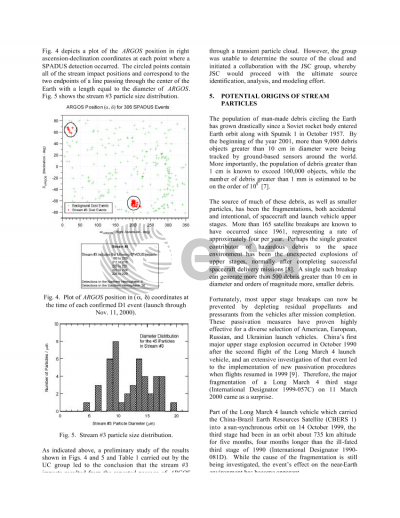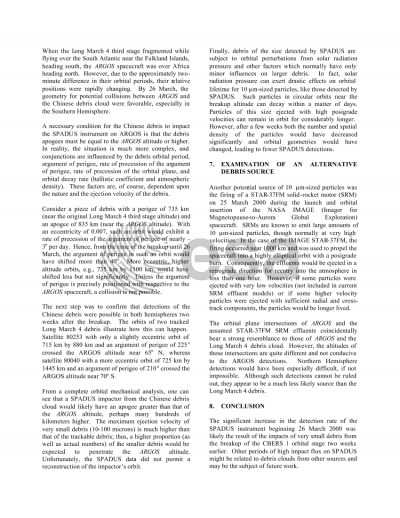Document details

Abstract
For the first time, a particle detector in Earth orbit has provided evidence to directly link sub-millimeter orbital debris to a specific satellite breakup. The University of Chicago's Space Dust Instrument (SPADUS), on the U.S. Air Force's Advanced Research and Global Observation Satellite, has been operating in a nearly polar orbit, at an altitude of about 830 km, since soon after its launch on 23 February 1999. The experiment was designed primarily to detect small natural and man-made particles less than 100 mum in diameter. Using a dual-plane Polyvinylidene Fluoride (PVDF)-based detection system, SPADUS can measure dust particle flux, mass distribution, velocity, and trajectory. From ARGOS launch through 2000, SPADUS recorded 327 impacts, about one impact every two days. In late March 2000, the instrument detection rate increased by approximately an order of magnitude, suggesting a potential encounter with a cloud or stream of debris. A review of the impact times and ARGOS orbital characteristics indicated that most of the detections occurred at multiples of half-revolution intervals over high northern and southern Earth latitudes, with a clear majority of impacts found over the southern hemisphere. Orbital analyses linked these impact events to the orbital plane intersections of ARGOS and the debris cloud of a Chinese orbital stage (International Designator 1999-057C, U.S. Satellite Number 25942), which had undergone a severe fragmentation on 11 March 2000 at an altitude 100 km below that of ARGOS. Approximately 45 of the SPADUS detections during the period 25 March - 23 April were associated with the postulated Chinese debris cloud. Other periods of high impact flux on SPADUS may be related to debris clouds from other sources.
Preview









